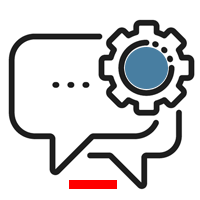January 26, 2023
What Makes aP Workspace Different

Transcript
Stop designing in a silo! Our methods of communication haven’t necessarily made our jobs easier when it comes to sharing insights on product designs and making decisions based on those insights. It’s no surprise that you find it hard to collaborate when you’ve got product specs in one spreadsheet and your boss’ feedback in a Teams message, and quotes from a supplier buried somewhere in your email. But what if crucial design conversations could happen within your design tool, right next to your insights on cost and manufacturability? That’s the idea behind aP Workspace.
I spoke with Barton Phinney, the Product Manager for aP Workspace, at aPriori’s recent manufacturing Insights Conference. There, he described the challenges faced by silo teams and how aP Workspace can help get everyone on the same page. I hope that the next time you’re making a key product decision, you won’t have to do it alone, but you’ll be backed by the insights of your entire value chain. Here is my conversation with Barton Phinney.
Leah Archibald: Barton, can you give us a little bit of the overview of what problem is aP Workspace really trying to solve?
What Problem Does aP Workspace Solve?
Barton Phinney: You’ve got so many stakeholders involved in the new product development process today, but they don’t have the tools and the information that they need to contribute to that process effectively. That’s what we’re working on with aP Workspace. We are connecting all those stakeholders together so that they can all contribute what they need to in that process.
Leah Archibald: Tell me how the process has been siloed before?
Barton Phinney: You typically get a lot of people working on different information in different places. You’re using Teams, you’re using SharePoint, you’re using many different ways to store each different piece of information. So that information becomes disconnected and outdated very quickly. By keeping that information in the same place – where the conversations are – you get that traceability that’s really needed to understand what decisions were made during the process. You know how they were made, and you can look back on that for future projects.
Leah Archibald: Companies have a lot of different communications tools that they can use. They can be using Slack, they can be using Teams. How is aP Workspace different? Is it just another communication platform or is it offering something different?
aP Workspace is the 365 of Product Design
Barton Phinney: The difference between aP Workspace and something like Teams is that it keeps all of the conversations together on the subject matter that you’re collaborating about. Think about it like PowerPoint and 365. We don’t use Teams to collaborate around PowerPoint, we use 365. We share it with people who need to be involved, we comment on specific features and slides that need feedback, so all of that information and all of those stakeholders can collaborate around the PowerPoint itself. That’s what we’re trying to bring to our customers: having everybody involved on the scenario data and being able to contribute to making decisions on that data.
Leah Archibald: How do you see customers using aP Workspace today, and where do you think they could take it in the future?
Barton Phinney: Today, I see customers working on their internal projects with aPriori – collaborating with procurement, cost engineering, design engineering, and manufacturing engineering. But in the future, we want to expand the technology so that you can involve different triggers to help facilitate workflows in those projects, and also involve people outside of the core team who are working on NPI. People like marketing, sales, and services. And then even expanding it further so that people like your suppliers can get involved – people who are outside your organization can also contribute to that process.
Leah Archibald: So what I’m hearing from you is that more people want to be able to collaborate in the process but with less time and overhead for them to be able to do it.
Barton Phinney: Exactly.
How to Streamline Collaboration in Manufacturing
Leah Archibald: This is probably one of the challenges that a lot of companies have faced when they’ve moved to remote work. When people are no longer in the same building together, there’s actually more work put into the ability to collaborate. So aP Workspace seems like a necessary movement towards streamlining the manufacturing enterprise so that everyone can get work done together.
Barton Phinney: Absolutely. The problem today is that people don’t have a way collaborate on the manufacturing insights, the cost insights, and the sustainability insights that they’re getting from aPriori. With aP Workspace, we’re providing that capability so that people can work asynchronously without having to set up meetings to discuss it. And then keeping that data readily available for your next project, so if you want to see what you did in your last project, you have the traceability and the audit trail to see what decisions were made and why.
Leah Archibald: Barton, thank you so much for explaining a little bit more about aP Workspace.
Barton Phinney: No problem.








